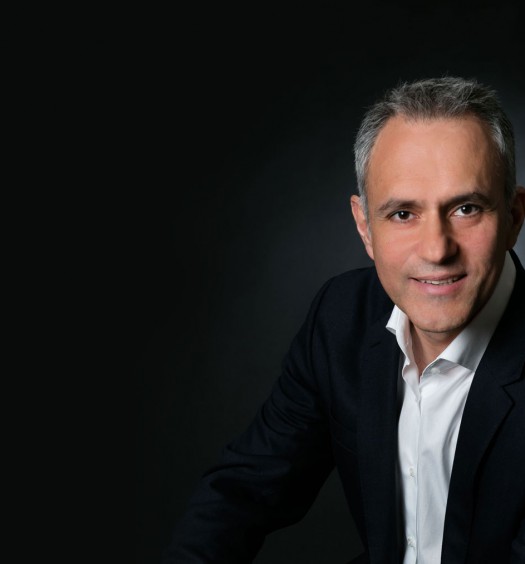A month ago, CyclOpe expressed regret for its oil forecasts at the beginning of the year. The market was then at over $85 for a barrel of Brent and bets were open on when the $100 mark would be exceeded. Now we are at $70 and the CyclOpe forecast ($60) is back, at least for the beginning of 2019.
How to explain such a reversal? There was the Kashoggi affair that put pressure on Saudi Arabia vis-à-vis the United States and encouraged it to comply with Trump’s tweets by flaming the fires of its production and exports. There were also US production numbers that exceeded expectations. In early autumn, Saudi Arabia, Russia and the United States broke production records and more than made up for the million barrels lost in Iranian exports.
And then, what about Washington’s decision to grant eight countries waivers for their imports of Iranian oil? For at least six months, Iran is slated to sell about 2 mbd and that’s what the market has chosen. Funds changed position and ‘bulls’ became ‘bears’. We are now talking about a surplus market and OPEC+ is starting to crack. The follow-up will be in Vienna on December 5th. But Saudi Arabia has already announced that it will reduce its exports by 500,000 bpd in December.
With the American elections over, we will have to resume the line of an American diplomacy that is more confused than ever and in particular, deal with the Chinese file, which has hardly budged since the last sanctions. An editorial in the Financial Times compared the US-China struggle to the long war in Greece that saw Sparta and Athens oppose one another, and in fact neither emerged victorious. But it is uncertain whether either Donald Trump or Xi Jinping have read Thucydides…
Finally, let us note that in this autumn of 2018, a certain wind of pessimism–which in our opinion is pretty much founded–is blowing over the world: overheating and reversal in the United States (and recession in 2020), slowdown in China, crisis in Europe, doubts among the emerging nations… 2019 could just as easily be the peak of the cycle as its reversal. To be continued…
Philippe Chalmin
To subscribe to the Monthly Report or Cyclope events please contact us at trading_event@ampersandworld.ch
COMMODITY MARKETS BRIEFS
Saudi Arabia, which had increased its oil output by 1 mbd since June, announced it would cut its exports by 500,000 bpd in December compared with November.
Iraq plans to increase oil production to 5 mbd in 2019 with exports of 3.8 mbd. Oil from Iraqi Kurdistan could in particular return quickly to the markets (200,000 to 400,000 bpd). In the long term, Iraq plans to produce 8.5 mbd. As for the Emirates, they are talking about 4 mbd at the end of 2020 and 5 mbd in 2030.
The United States finally granted waivers for oil imports from Iran to eight countries, accounting for 90 percent of Iran’s exports: China, Japan, Korea, India, Turkey, Greece, Italy and Taiwan. This will be valid for six months. It is still difficult to explain this reversal of the American administration. At the same time, the EIA further reassessed its US production estimates and now predicts that the 12 mbd level will be reached in the second half of 2019. In October, China imported a record 9.61 mbd, of which 654,000 bpd from Iran (458,000 bpd in September).
According to the USDA, China’s ending cereal stocks will reach unprecedented levels: 207.5 mt of corn, 143.6 mt of wheat. But without China – which is “off the market” – global closing stocks will be at their lowest!
In September, Venezuela produced only 1.2 mbd of oil and some analysts believe that production could fall to 700,000 bpd by the end of 2019.
The 40% increase in uranium prices since April 2018 must be put into perspective. Prices are still at their highest since 2016 thanks to mine closures.
Iran has strongly increased its imports of… American soy! 335,000 tonnes since September and before the November 5th embargo!
Katanga Mining, the Congolese subsidiary of Glencore, has suspended its cobalt exports for at least six months because of uranium levels being too high.
The major oil traders have very different visions of prices for 2019. Where Trafigura is referencing the barrel at $100, Glencore is evoking $85 / $90, Gunvor $70 / $75 and Vitol is counting on $65. Which is more than $30 difference!
The steam coal market is concentrating on the most caloric qualities: while Australian coal (6322 kcal / kg) was at $112.25 at the beginning of October per tonne FOB, Indonesian coal (4200 kcal / kg) was traded at only $35.88, a record differential of $73.37.
According to the US EIA, US oil production will have risen from 1.39 mbd in 2018 to 10.74 mbd on average. In the third quarter, the average will have exceeded 11 mbd at 11.03 mbd for the first time and in August production set a new record at 11.34 mbd. In 2019, the increase will be 1.02 mbd to 11.76 mbd. However, US consumption is 20.41 mbd (+450,000 bpd) and 20.64 mbd expected in 2019. In November, the only shale oil producer should reach the record level of 7.71 mbd while a new pipeline should be coming into service.
In the first week of October, Iran’s oil exports fell to 1.1 mbd (2.8 in March, 2.5 in April). Some countries, such as India and South Korea (which did not import a drop of Iranian crude oil in September) asked Washington for waivers. The Indian refiner Reliance has stopped all imports from Iran. Iran says it will continue to produce 3.8 mbd, with OPEC’s estimate for August being 3.58 mbd. That being said, it is not impossible for Iranian oil to pass through Iraq… (which has decided to stop lorry exports to Iran).
According to Worldsteel, global steel demand will increase by 1.4% in 2019 and increase from 1658 to 1681 mt.
Egypt is said to be investigating hedging strategies for its purchases of wheat (the world’s largest importer).
In the last quarter of 2018, China is expected to import only 18mt of soybeans for the most part from Brazil and Argentina against 24.1mt in 2017. As for Chinese imports of oil and LNG from the United States, they have practically stopped.
The Kunlun bank, a subsidiary of the Chinese oil giant CNPC, which provided the bulk of financial transfers between China and Iran, has decided to no longer honour Iranian payments in yuan (and euros). China buys $1.5 billion of oil from Iran and so far, everything has gone through Kunlun Bank. The bank was already subject to US sanctions in 2012. It also appears that Sinopec and CNPC have refused all cargo of Iranian crude in November. On average for the first nine months of 2018, China imported 650,000 bpd of Iranian oil.
The price of palladium continues to climb and is approaching parity with gold.
ILZSG estimates the global zinc market deficit in 2018 at 322,000 tonnes (compared to a forecast of 263,000 tonnes in April). China’s mining output is expected to decline by 2.5%. For 2019, the ILZSG anticipates a slight deficit of 72,000 tonnes.
In the Brazilian presidential campaign, Jair Bolsonaro talked a lot about niobium (85% of world production is produced by Brazil), the Chinese appetite for which he wants to stem.
Vitol is frankly bearish in the oil market, anticipating an increase in global consumption of just 1.3 mbd in 2018 and 2019.
Glencore has announced a production cost in its coal mines of $52 per tonne in 2018 and $49 in 2019. By 2019, Glencore will produce 145 mt of coal.
A survey conducted at the London Bullion Market Association (LBMA) annual dinner offered a gold price in October 2019 of $1,532 an ounce and $15 for silver. Platinum should be at $1,010 and palladium at $1195. A Reuter poll gave average prices in 2019 of $1300 for gold, $14.40 for silver, $875 for platinum and $1025 for palladium.
To further complicate the oil situation, relations between Kuwait and Saudi Arabia have hardened. Kuwait has not acceded to the embargo on Qatar and has signed a defence agreement with Turkey. This blocks the resumption of production in the ‘neutral zone’ shared by Kuwait and Saudi Arabia: a potential production of 500,000 bpd is being frozen for three years. This is important considering that between May and September, OPEC increased production by only 428,000 bpd (excluding Nigeria and Libya).
In October 2018, OPEC pushed its oil production to the highest since December 2016 at 33.31 mbd (Reuters calculations), 390,000 bpd more than in September, including 200,000 bpd from AVEs.
Although the price of lead has decreased by 23% since the beginning of the year, the market should be in deficit by 2018 by 123,000 tonnes. According to Wood Mackenzie, production fell by 450,000 tonnes, half of it in China. And LME stocks are at their lowest since 2009.
According to a poll of 30 analysts by Reuters, the average price of copper should be $6699 per tonne in 2019 with a deficit that should only be 44,000 tonnes. Zinc should be at $2732, nickel at $14,200, aluminium at $2175 with a market deficit of 527,500 tonnes.
According to WBMS, the nickel market had a deficit of 56,300 tonnes in the first eight months of the year. But there are 235,000 tonnes of metal in stockpiles.
In the first half of 2018, China was by far the world’s largest consumer of scrap (+105% at 127 mt) and Turkey the largest importer (+15% at 10.7 mt).
To subscribe to the Monthly Report or Cyclope events please contact us at trading_event@ampersandworld.ch















